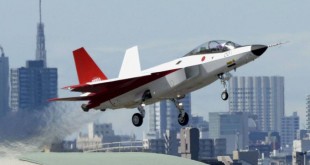AI emulates human cognition – i.e. learning based on experience and patterns, rather than by inference (cause and effect). Artificial intelligence covers everything from machine learning to business intelligence. Machine learning is a branch of artificial intelligence (AI) that refers to technologies that enable computers to learn and adapt through …
Read More »TimeLine Layout
August, 2021
-
19 August
Holographic data memory can store 1 terabyte (TB) of data in a sugar-cube-sized crystal.
Photography measures how much light of different color hits the photographic film. However, light is also a wave, and is therefore characterized by the phase. Phase specifies the position of a point within the wave cycle and correlates to depth of information, meaning that recording the phase of light scattered …
Read More » -
15 August
UK implementing National Strategy of Quantum Technology to become Global Leader in future Quantum industry
The demand for quantum technologies is being driven by large and significant societal challenges, including the need to build in more inhospitable places, for greater security around information and transactions, for better medicines and therapies, and to counter cyber terrorism. Technologies that will allow fire crews to see through smoke …
Read More » -
14 August
DOD looks to secure Content delivery Network (CDN) services to stream its mission-critical and sensitive information
A Content Delivery Network (CDN) is a globally distributed network of web servers or Points of Presence (PoP) whose purpose is to provide faster content delivery. The content is replicated and stored throughout the CDN so the user can access the data that is stored at a location that is …
Read More » -
13 August
Fluidic Propulsive System most silent propulsion for future Drones & Aircraft
In traditional aircraft design, airframes and engines are designed separately and bolted together. This leads to inefficiencies due to additional drag. The approach also leads to propulsive inefficiencies via non-distributed propulsion. Hovering and VTOL requirements introduce even more complexity, size and weight to the system. Jetoptera’s design is a …
Read More » -
10 August
IoT Chips or IoT Modules and SoCs enabling Internet of Things revolution
The global IoT market is expected to reach a value of USD 1,386.06 billion by 2026 from USD 761.4 billion in 2020 at a CAGR of 10.53%, during the period 2021-2026. The internet of things technology helps in connecting various smart devices together to ease the operation and sharing of …
Read More » -
10 August
Japan plans F-35A and F-35B induction, indigenous stealth fighter and Hypersonic Weapons to counter Chinese J-20 deployment
The security environment of Japan and the whole region is threatened by expanding military and assertiveness of China and the testing of nuclear weapons and ballistic missiles by North Korea. Tensions between Japan and China over the Senkaku/Diaoyu Islands dispute have recently increased. Japan’s Defense White Paper released in …
Read More » -
8 August
Soft Material Enabled Soft Electronics for Medicine, Healthcare, and Human-Machine Interfaces
Since the development of the field effect transistor in 1920s, the electronics industry has focused on high speed and large capacity devices such as microprocessors and random access memories. However, the recent emergence of personalized and mobile electronics has diversified the research efforts from performance-oriented research to human-friendly topics. Conventional bulky …
Read More » -
8 August
Optoelectronics technology trends and market
Optoelectronic technology is a new technology formed by the combination of photon technology and electronic technology. Optoelectronics is the field of technology concerned with electronic device application to the sourcing, detection and control of light. Optoelectronics is described as “a device that responds to optical power, emits or modifies optical …
Read More » -
5 August
Militaries race to develop Very Long Range Air-to-Air missiles with features like large ‘no-escape zone’, AESA Radar, EO/IR Imaging, Network centric data links and hypersonic speeds
Over the past few decades, advances in electronic sensors, communications technology, and guided weapons may have fundamentally transformed the nature of air combat. One of critical technologies was superior situational awareness (SA) when a pilot has a better understanding of the position of all relevant aircraft and their activities in …
Read More »
 International Defense Security & Technology Your trusted Source for News, Research and Analysis
International Defense Security & Technology Your trusted Source for News, Research and Analysis









